Lupines - The Amazing Permaculture Plant You Likely Don't Know
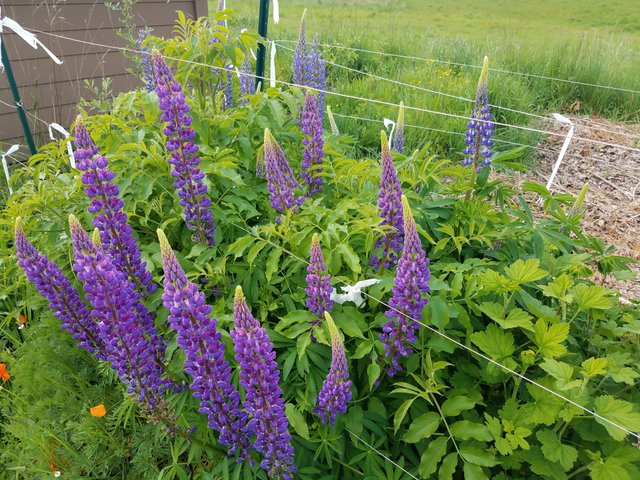
I just love lupines and they provide a ton of benefits when used on a homestead or nature focused yard. But I rarely see these amazing plants brought up in discussions about permaculture design. So let's change that at least a little and talk about lupines today.
This post was inspired by a recent conversation I was having with @nateonsteemit on my post from yesterday titled "What Can I Help You With?".
Please check out that post and leave your homesteading or gardening question--I would love to hear from you!
So why do I like lupines so much? Let's dive into the reasons why lupines are awesome!
Quick Note About Russel Hybrids
.jpg)
Picture from Wikipedia - https://commons.wikimedia.org/wiki/File:Flores_de_lupino_(Ushuaia).jpg
Most lupines you see in the stores are called Russel hybrids and are not a wild type. These come in a wider range of colors than the wild varieties and can get a bit weedy in some areas. In my own experience these also don't seem to be as hardy as the wild types.
If this is all you can find then Russel hybrids can work but I would try to get wild types that are native to your area if you can. There are over 200 varieties of lupines found all over the world.
The Russel hybrid was actually developed using a native lupine from the Pacific Northwest so a lot of the lupines in my area look similar to Russel hybrids.
Characteristics of Lupines
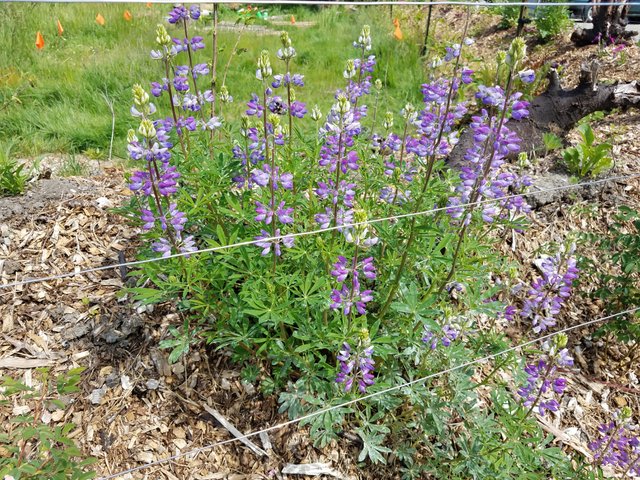
What I think is a sickle keeled lupine that I salvaged from a site that was being developed. One of over 5 native lupines in Western WA.
As far as I know all lupines are nitrogen fixers and they tend to develop a large taproot. This makes them great for building soil and tapping water and nutrients from deep under the surface.
A lot of lupines are perennials but some are annuals and others are biennial. Generally, the annual lupines tend to be the smallest and less showy. But I still find them to be beautiful. The Texas state flower is an annual lupine and is very beautiful--the Texas bluebonnet.
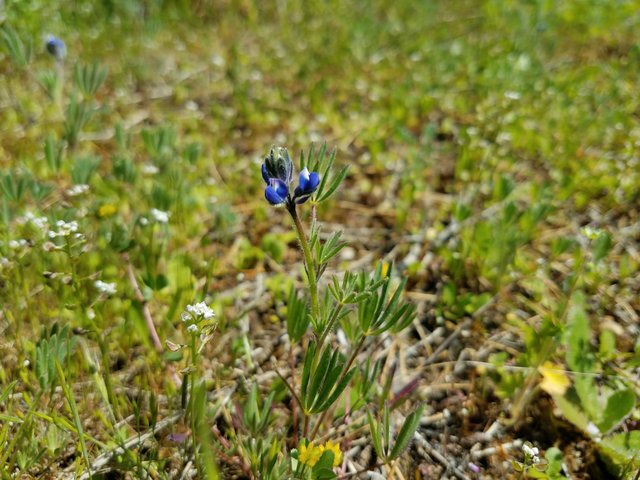
Miniature lupine is a small little annual lupine found in Western WA in prairies.
Some lupines can be transplanted but most don't seem to like it. I find it is much better to just grow them from seed. Since lupines are in the same family as peas and beans they develop similar looking seed pods. As the pods dry you can easily crack them open and harvest a number of seeds from each pod.
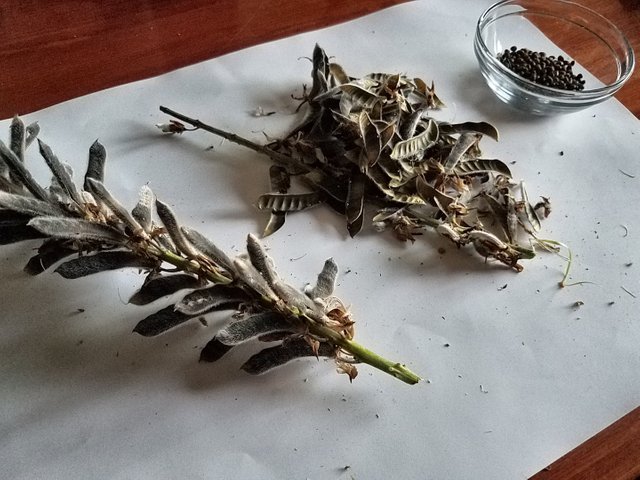
The seeds have a hard coat and most of the time you will need to soak them for around 24 hours or sow them in the fall to get them to germinate. I have had good luck just soaking them before sowing/broadcasting them.
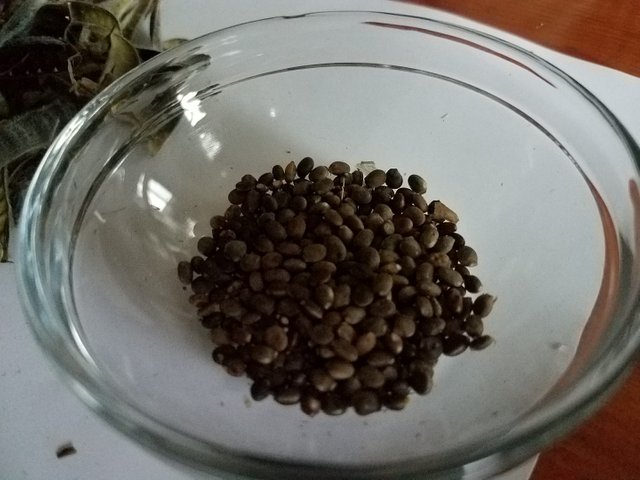
It does not take a lot of lupine plants to get a ton of seeds. If you can get a few started you can easily save a large number of seeds each year. I have also found that lupines volunteer fairly easily and will likely spread on their own. As the seed pods dry they eventually twist inward launching the seeds far away from the parent plant.
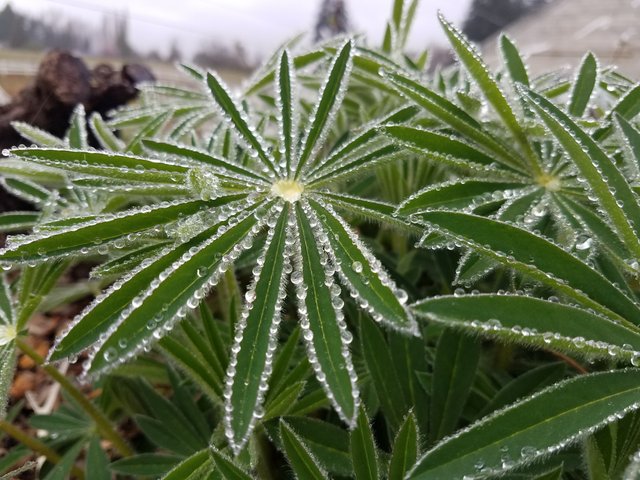 seem
seem
One final fun characteristic is that lupine leaves tend to have small hairs on them that trap water. I love looking at the leaves after a rainstorm!
Benefits of Lupines
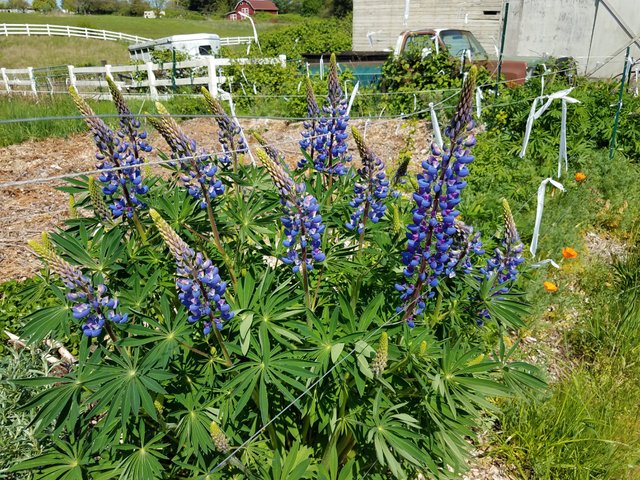
With permaculture designs it is normal to try to stack functions. If a plant or animal can provide multiple functions it is a better addition to your homestead than a plant or animal that only provides a single function.
So through that lens let's look at lupines.
Lupines are nitrogen fixing plants meaning that they help fertilize the soil feeding other plants and soil life. This makes them great at helping you build soil and supporting other plants. They can be great support plants for your fruit trees and shrubs.
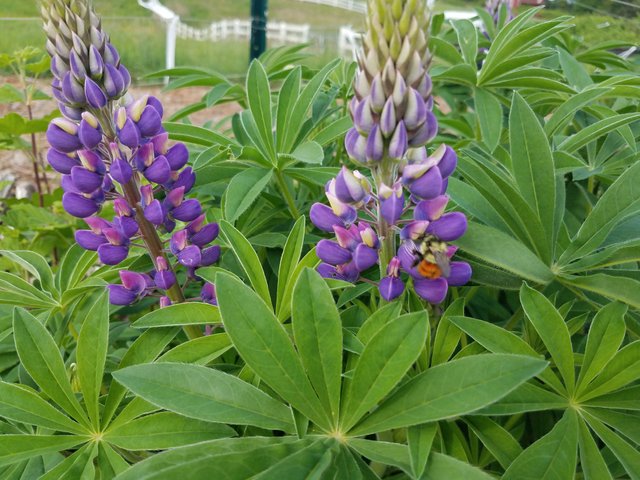
Lupines are great pollinator plants (bumble bees love them!) and they are also very beautiful. This will help make your homestead a more enjoyable and attractive place to be. Plus your neighbors will love them!
With a deep tap root lupines can tap water resources and nutrients that other plants may struggle to reach.
Lupines also have the potential to be a good chop-and-drop plant. Though some varieties may be better than others for this use. But lupines can create a lot of biomass and I would recommend figuring out a chop-and-drop cycle for your lupines. The result would be a great high nitrogen mulch.
Lupines are also a great living mulch and can help shade the ground with their large leaves (assuming you are using a large variety) and fill in the gaps between your shrubs and trees.
Finally, if you use the lupines that are native to your area there are likely butterflies in your area that are dependent on lupines.
As you can see lupines provide a wide range of benefits that are very similar to some of the more popular permaculture plants like comfrey. But lupines have the added benefit of being nitrogen fixers.
Time to Plant Lupines
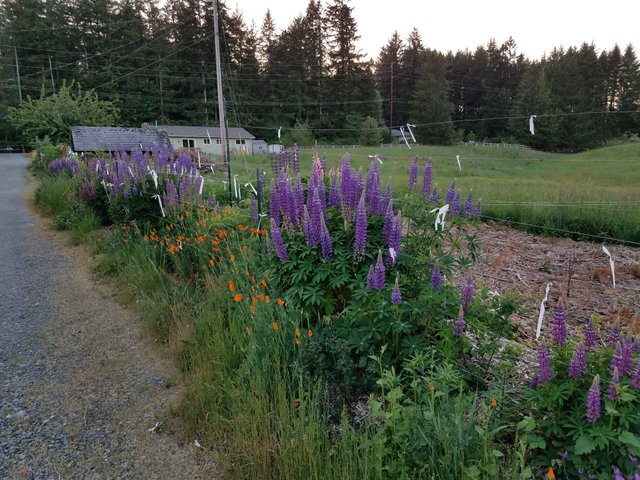
Last night I ordered about a pound of riverbank lupine seeds which is one of the main lupines I plant. With over 200 lupine types in North America alone you should be able to find some that are native to your area that you also like to grow.
I'm going to broadcasting these lupine seeds around my new food forest that I'm developing in an old gravel parking lot. While the food forest is doing great the lupines will really help jump start this area by adding nitrogen to the soil and by breaking up the gravel soil with their deep tap roots.
Lupines love disturbed areas and poor soils. I see a lot of people asking about good companion plants for their fruit trees. To me there is no better plant than a lupine given all the benefits they can provide.
So what do you think? Have you tried planting lupines? Did you grow the wild types or a Russel hybrid? Please leave a comment with your thoughts.
Thank you!

Weekly Blog Post
- 3 Things Your Garden Needs to Attract Birds
- Companion Post on Steemit - What You Can Do to Attract Birds to Your Garden
Related Blog Posts
- How to Work With Nature to Rewild your Homestead (And Why You Should Do It.)
- 5 Ways Your Homestead Will Benefit from Native Plants
- Chop-and-Drop: A Quick and Easy Way to Abundance
- 3 Plant Types You Need to Know: Perennial, Biennial, and Annual
Follow me for more posts all about homesteading, working with nature, and growing your own food: @wildhomesteading
And check out my blog - www.wildhomesteading.com for weekly in-depth posts on working with nature to grow your own food and start/build your homestead.
Congratulations, your post has been selected to be included in my weekly Sustainability Curation Digest for the Minnow Support Project.
Thank you! :)
Another fantastically informative post! I've included it in the Homesteaders - Living Naturally, newsletter
Posted using Partiko Android
Thank you! :)
Lupines are one of my favorite flowers along with Delphinium for a flower garden. I had a ton of lupine but the aphids would devour them every year. I did cut down my black locust tree last fall which was a major contributor to aphids and I am hoping to have better plants this year as I started them from seed last season.
Good luck with the aphids! I have had some on my lupines but so far not too bad. What type of lupine are you growing?
Posted using Partiko Android
I have native blue bonnets and russell hybrids from the store seed packets. I am hoping to see them come back this year. If not I will have to start over.
Nice - I hope they come back for you!
I love lupines as well. Am trying to enlarge my collection.
Nice! What type are you growing?
Posted using Partiko Android
Thanks for sharing this wonderful article with us @wildhomesteading 😉 I don't think I ever seen real lupine in Indonesia (or where I live😊) but I read abd seen the pictures, so .. is that anyway to recognise the species and the hybrid of lupines?
I'm not sure... sometimes flower color is a good indicator. The hybrids tend to be much more colorful. Also, leaf size--all the hybrids I know of have big leaves (hand size) but so do some of the wild types. There are so many varieties that it is hard to determine the exact species. I'm still learning the ones in my area--there is really only one that I can identify every time if I see it growing away from my property. Even on my property there are 2 types that look about the same until they flower--one is pink and the other is purple. Sorry can't give more specific advice =/
Thank you @wildhomesteading 😉 I just wondering. but I think the size of the leaves could be one of the easy way to recognise it😊
Congratulations @wildhomesteading! You have completed the following achievement on the Steem blockchain and have been rewarded with new badge(s) :
You can view your badges on your Steem Board and compare to others on the Steem Ranking
If you no longer want to receive notifications, reply to this comment with the word
STOPTo support your work, I also upvoted your post!
Do not miss the last post from @steemitboard:
Vote for @Steemitboard as a witness to get one more award and increased upvotes!
I will have to start looking for these. My philosophy is to just let everything live if I don’t need the space for something else and as long as it doesn’t have nasty thorns or burrs. So I have a number of plants growing that I can’t identify. I bet that I have a lupine growing in the backyard somewhere
Thanks for the education.
You're welcome! You might very well have some. If you do you could collect seeds from them. I got my first bunch of seeds by finding some growing along a bike trail.
Posted using Partiko Android
Love lupins will get some in my new place. I believe there is a Cornish version that is popular in the UK 💯🐒
Nice -- I will have to look that up :)
Hope i am right now 💯🐒
Love that plant!
Great post! :)
Posted using Partiko Android
Thank you! :) They are great plants to grow :)
This is really important knowledge! Improving & enriching soil is where it ALL begins!! That they are beautiful as well? Never forget the importance of a happy gardener! 💚
Posted using Partiko Android
Thanks! :) I always try to include some lupines in my planting areas.
Posted using Partiko Android